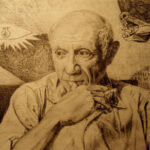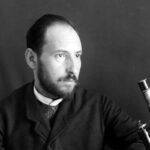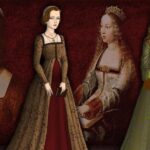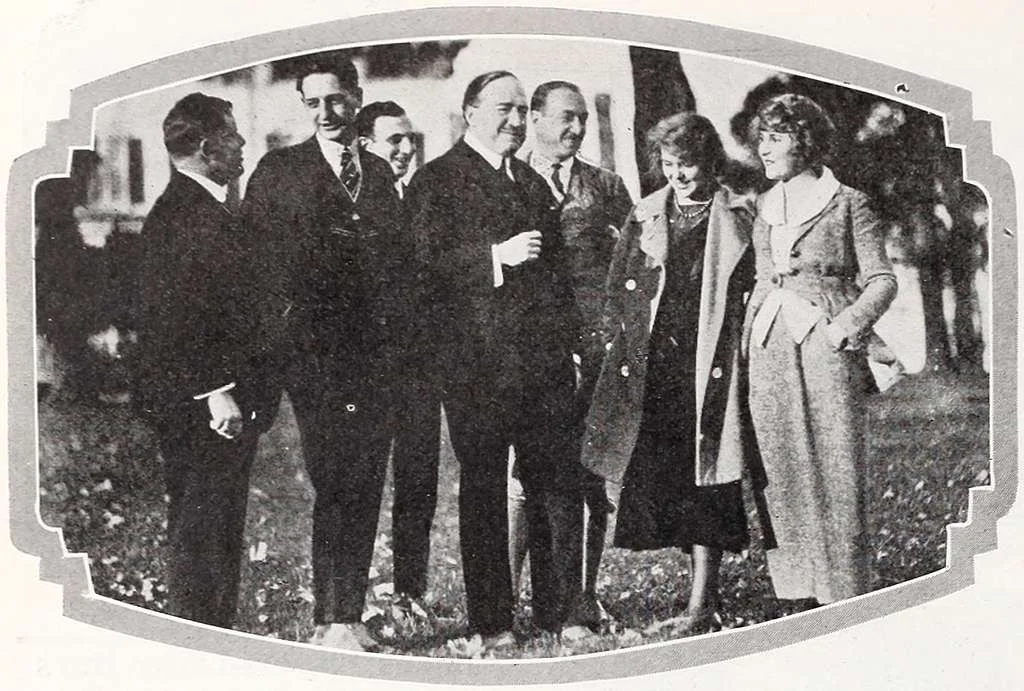
By Shamatic
20 Famous Personalities from Spain
Spain is a country rich in history and culture, home to some of the most iconic figures in the world. From Picasso and Dalí, whose groundbreaking art reshaped modern aesthetics, to Cervantes and Lorca, who defined literary brilliance, and athletes like Nadal and Gasol, who have excelled on the global stage—Spanish personalities have profoundly influenced various fields. Let’s explore their remarkable lives, achievements, and lasting legacies that continue to inspire and shape the world today. Here you will learn about 20 famous personalities from Spain.
Table of Contents
TogglePablo Picasso (1881–1973)
Pablo Picasso, a name synonymous with artistic revolution, remains one of the most influential figures in modern art. His prolific career, spanning over seven decades, witnessed the birth of Cubism and a constant evolution of artistic expression. Picasso’s impact extends far beyond his paintings; he redefined the very concept of art, leaving a legacy that continues to inspire and challenge audiences worldwide.
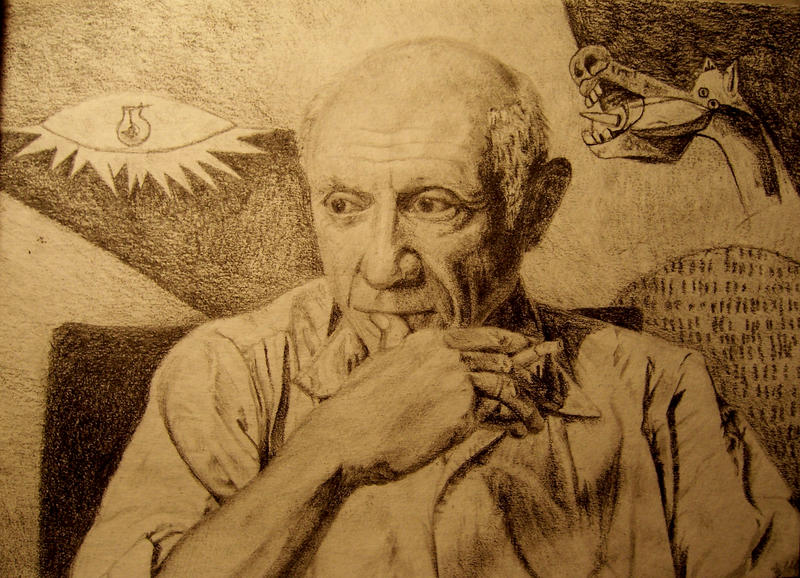
Background: A Prodigy from Andalusian Roots
Pablo Ruiz Picasso, born on October 25, 1881, in Málaga, Andalusia, Spain, showcased his artistic talent from an early age. His father, José Ruiz y Blasco, an art teacher, played a key role in nurturing his abilities. The vibrant culture and rich history of Málaga greatly shaped Picasso’s artistic vision.
Net Worth: A Testament to Artistic Success
While precise figures are difficult to ascertain, Picasso’s estate was valued at a substantial sum upon his death. He was known to be a very wealthy man, amassing a large fortune from his art. His works continue to command record-breaking prices at auctions, solidifying his status as one of the most valuable artists in history.
Education: From Classical Training to Avant-Garde Innovation
Picasso’s formal artistic education began at the School of Fine Arts in Barcelona and continued at the Royal Academy of San Fernando in Madrid. Although he excelled in traditional techniques, his restless spirit sought new avenues of expression. His move to Paris, the epicenter of the avant-garde, exposed him to diverse artistic movements, ultimately leading to his pivotal role in the development of Cubism.
Birth & Death: A Life Dedicated to Art
Born on October 25, 1881, in Málaga, Spain, Pablo Picasso lived a long and incredibly productive life. He passed away on April 8, 1973, in Mougins, France, leaving behind a vast and diverse body of work that continues to captivate and inspire.
Contributions: A Revolutionary Force in Modern Art
Picasso’s impact on art is unparalleled. As a co-founder of Cubism, he redefined traditional perspectives and opened the door for abstract art. His “Blue Period” and “Rose Period” revealed both his emotional depth and ability to explore diverse styles. Iconic works like “Les Demoiselles d’Avignon” and “Guernica” showcase his artistic brilliance and reflect his engagement with significant historical events. Beyond painting, his mastery extended to sculpture, ceramics, and drawing, cementing his role as a leading figure in 20th-century art. Picasso’s constant innovation and defiance of conventions continue to inspire artists and captivate art lovers around the globe.
Salvador Dalí (1904–1989)
Salvador Dalí, a name synonymous with surrealism, was a Spanish artist whose eccentric persona and dreamlike imagery captivated the world. His paintings, sculptures, and writings continue to fascinate and provoke, leaving an indelible mark on 20th-century art. Dalí’s unique vision and technical mastery cemented his place as a leading figure in the surrealist movement.
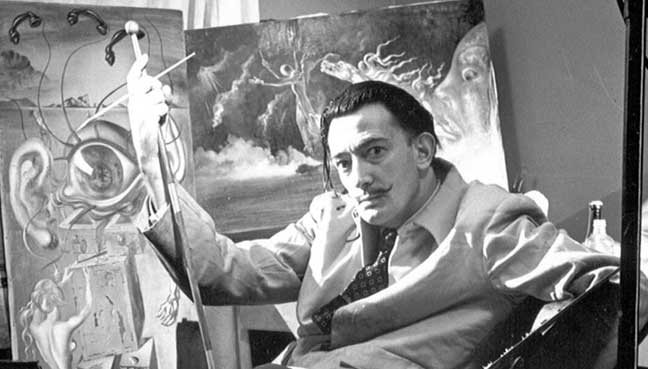
Background
Salvador Dalí was born on May 11, 1904, in Figueres, Catalonia, Spain. His early life was marked by a fascination with the unusual and a strong sense of individuality. He developed a penchant for the dramatic, cultivating a persona as flamboyant as his art. This theatricality, coupled with his artistic talent, made him a controversial yet compelling figure.
Net Worth
While precise figures are difficult to pin down, Salvador Dalí amassed considerable wealth during his lifetime. His paintings were highly sought after, and his commercial ventures, including collaborations in fashion and design, contributed to his financial success. After his death, his estate has continued to generate significant revenue, with his works remaining highly valuable.
Education
Dalí’s formal art education began at the San Fernando Academy of Fine Arts in Madrid. Though talented, his rebellious nature led to his expulsion. However, this did not deter him. He continued to develop his skills and explore new artistic avenues, drawing inspiration from various styles and ultimately forging his own unique path.
Birth & Death
Salvador Dalí was born on May 11, 1904, in Figueres, Catalonia, Spain, and passed away on January 23, 1989, in the same city. He is buried in the Dalí Theatre-Museum in Figueres, a testament to his enduring connection to his birthplace.
Contributions
Salvador Dalí made an indelible mark on the world of art. As a key figure in the surrealist movement, he was celebrated for his precise technique and ability to bring dreamlike visions to life on canvas. Works like The Persistence of Memory—featuring its iconic melting clocks—and The Elephants remain universally admired and continue to captivate audiences. Dalí’s creativity extended beyond painting, as he also experimented in sculpture, film, and design, producing a varied and influential portfolio. Beyond his art, Dalí turned himself into a living masterpiece, crafting an eccentric persona that solidified his timeless legacy.
Antoni Gaudí (1852–1926)
Antoni Gaudí (1852-1926) was a Catalan architect whose unique and highly individualistic designs have become synonymous with Barcelona. His work, characterized by its organic forms, vibrant colors, and intricate details, transcends mere buildings, transforming them into immersive, almost dreamlike experiences. Gaudí’s legacy continues to captivate and inspire, making him one of the most celebrated architects in history.
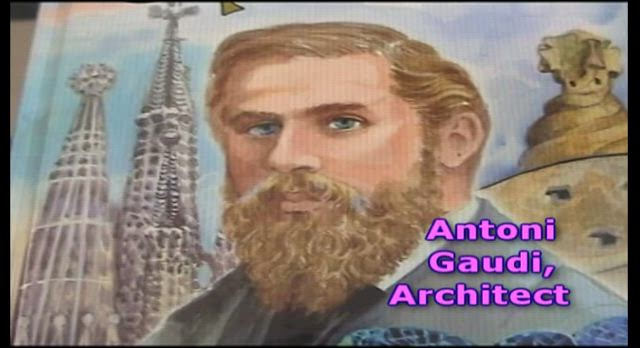
Background:
Antoni Gaudí, born in Reus, Catalonia, found inspiration for his unique architectural style in the natural world around him. His early observations of nature’s patterns and forms became a defining feature of his work. A devout Catholic, Gaudí’s faith profoundly influenced his creations, especially in his later years. His deep connection to his Catalan heritage further shaped his artistic vision, leaving a lasting mark on his designs.
Net Worth:
While precise figures are difficult to ascertain, Gaudí lived a relatively modest lifestyle, prioritizing his architectural work over personal wealth. He was known for his dedication to his projects, often working long hours and reinvesting his earnings into his creations. His legacy, however, has generated immense cultural and economic value for Barcelona, making him an invaluable asset to the city.
Education:
Gaudí studied architecture at the Escola Tècnica Superior d’Arquitectura in Barcelona. Though he was not considered a brilliant student in the traditional sense, he excelled in his ability to visualize and create three-dimensional forms. He was particularly interested in structural integrity and the integration of art and architecture.
Birth & Death:
Antoni Gaudí was born on June 25, 1852, in Reus, Catalonia, Spain. He tragically died on June 10, 1926, in Barcelona, after being struck by a tram. His death shocked the city, and he was given a grand public funeral, reflecting the deep respect and admiration he commanded.
Contributions:
Gaudí’s contributions to architecture are profound and enduring:
- Sagrada Família: His magnum opus, this basilica remains unfinished but stands as a testament to his visionary genius. Its intricate facades and soaring towers blend Gothic and Art Nouveau styles with his unique organic forms.
- Park Güell: A whimsical park filled with colorful mosaics, undulating benches, and fantastical structures, showcasing Gaudí’s mastery of integrating architecture with nature.
- Casa Batlló: A residential building transformed by Gaudí into a surreal and captivating work of art, featuring a facade that resembles a dragon’s back.
- Casa Milà (La Pedrera): Another residential building, notable for its undulating stone facade and rooftop terrace with sculptural chimneys.
- Casa Vicens: One of his earlier works, demonstrating his early use of vibrant tiles and intricate brickwork.
Gaudí’s work not only transformed the cityscape of Barcelona but also redefined the possibilities of architecture, leaving a legacy that continues to inspire architects and art enthusiasts worldwide.
Penélope Cruz (1974–)
Penélope Cruz Sánchez, a name synonymous with both captivating beauty and formidable talent, has carved a remarkable path in international cinema. From her early days in Spanish films to her acclaimed roles in Hollywood, Cruz has consistently delivered powerful performances, earning her a place among the world’s most respected actresses.

Background:
Born on April 28, 1974, in Alcobendas, Madrid, Spain, Cruz grew up with a strong artistic inclination. Her mother, Encarna Sánchez, was a hairdresser, and her father, Eduardo Cruz, was a mechanic. This working-class background instilled in her a strong work ethic and a grounded perspective. Her early interest in performing arts led her to pursue dance and acting from a young age.
Net Worth:
Penélope Cruz has amassed a significant net worth through her successful acting career and endorsements. Estimates place her net worth around $85 million. This reflects her long and varied career, spanning both Spanish and international productions.
Education:
Cruz’s formal education included nine years of classical ballet at Spain’s National Conservatory. She also studied theatre at Cristina Rota’s School in Madrid, honing her acting skills and developing her passion for dramatic arts. Her dedication to learning and refining her craft has been a cornerstone of her success.
Birth & Death:
Penélope Cruz was born on April 28, 1974, and is currently alive and active in her career.
Contributions:
Cruz’s contributions to cinema are extensive and diverse. She gained early recognition in Spanish films like “Jamón, Jamón” and “Belle Époque.” Her breakthrough into international cinema came with roles in films like “All About My Mother,” directed by Pedro Almodóvar, a frequent collaborator.
Her Hollywood career includes notable performances in films such as “Vanilla Sky,” “Pirates of the Caribbean: On Stranger Tides,” and “Vicky Cristina Barcelona,” for which she won an Academy Award for Best Supporting Actress. She has also continued to work in Spanish-language films, demonstrating her commitment to her roots.
Beyond acting, Cruz is known for her philanthropic work and her role as a fashion icon. Her ability to portray complex characters with depth and authenticity has solidified her reputation as one of the most talented and influential actresses of her generation.
Javier Bardem (1969–)
Javier Bardem, a name synonymous with intense performances and undeniable talent, has carved a remarkable path in international cinema. From his early roles in Spanish films to his Oscar-winning performance in “No Country for Old Men,” Bardem’s ability to embody complex characters has captivated audiences worldwide.
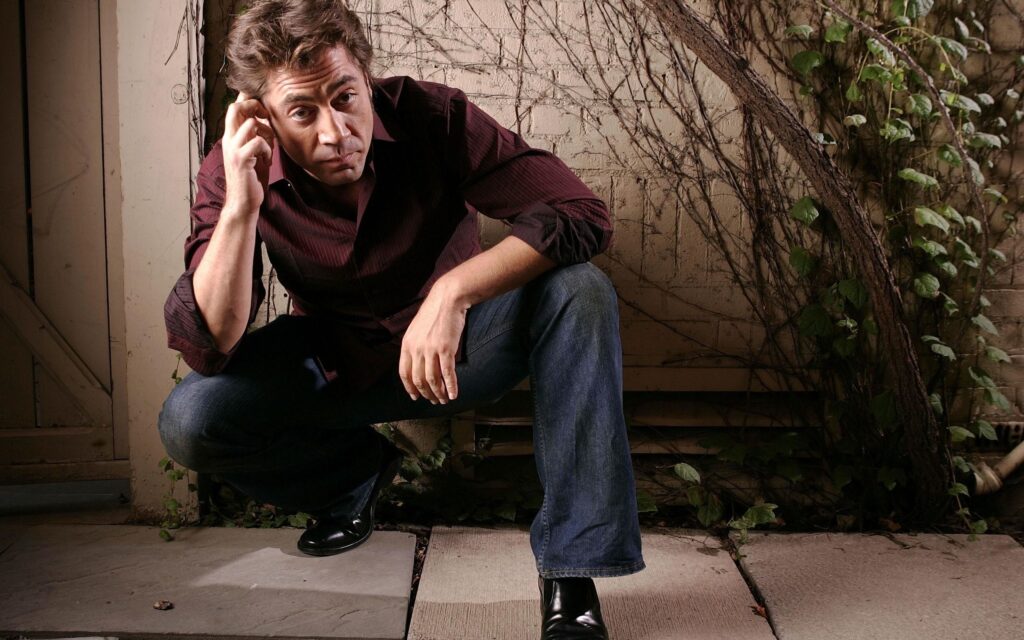
Background:
Born on March 1, 1969, in Las Palmas de Gran Canaria, Canary Islands, Spain, Javier Bardem hails from a family deeply rooted in the world of entertainment. His mother, Pilar Bardem, was a renowned actress, and his grandparents were also actors. This familial connection to the performing arts undoubtedly influenced his career trajectory. Initially, Bardem pursued painting, but his passion for acting eventually took center stage.
Net Worth:
Javier Bardem has built an impressive net worth thanks to his thriving acting career. With numerous high-profile roles in both Spanish and international films, his wealth is estimated in the tens of millions. As one of the most sought-after actors in the industry, his financial success shows no signs of slowing down.
Education:
While his family’s artistic background provided an informal education, Bardem also studied painting at the Escuela de Artes y Oficios in Madrid. Though he didn’t pursue formal acting training, his natural talent and dedication to his craft have made him one of the most respected actors of his generation.
Birth & Death:
Javier Bardem was born on March 1, 1969. He is currently alive and continues to work in the film industry.
Contributions:
Bardem’s contributions to cinema are vast and varied. He gained recognition in Spain with films like “Jamón, Jamón” and “Live Flesh.” His breakthrough role in the United States came with “Before Night Falls,” for which he received an Oscar nomination. His portrayal of the chilling Anton Chigurh in “No Country for Old Men” earned him an Academy Award for Best Supporting Actor. He has also delivered compelling performances in films like “Biutiful,” “Skyfall,” “Dune,” and “Being the Ricardos.” Bardem is known for his commitment to challenging roles, his ability to portray complex and often dark characters, and his dedication to his craft. He has solidified his place as a prominent figure in global cinema.
Miguel de Cervantes (1547–1616)
Miguel de Cervantes Saavedra is a name etched in the annals of literary history, primarily known as the author of “Don Quixote,” a masterpiece that revolutionized the novel form. His life, marked by adventure and adversity, provided a rich tapestry of experiences that shaped his writing and left an enduring legacy on world literature.
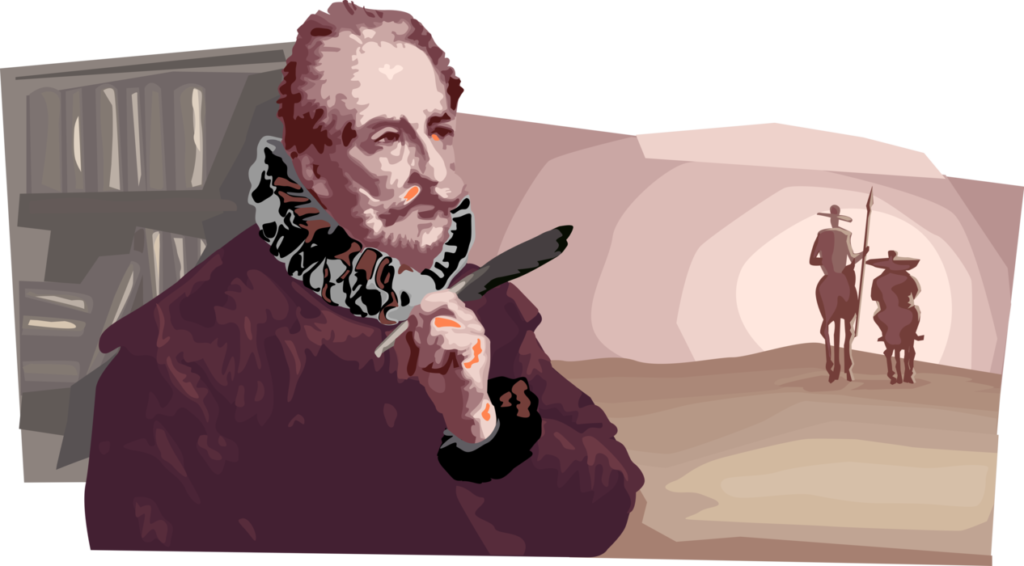
Background:
Miguel de Cervantes, born in 1547 in Alcalá de Henares, Spain, had humble beginnings. His father worked as a barber-surgeon, and financial hardship marked much of his early life. Far from the life of luxury or ease, Cervantes experienced remarkable challenges. He served as a soldier, was captured by pirates, and endured years of captivity. These intense experiences shaped his worldview and profoundly influenced his portrayal of human nature in his writing.
Net Worth:
While Cervantes achieved immense literary fame posthumously, he faced financial difficulties throughout his life. Records suggest he struggled to make a living from his writing. He often held other jobs and faced imprisonment due to debt. Therefore, estimating his net worth is nearly impossible, and he most likely lived a life of financial instability. His true wealth lies in his literary legacy, which is priceless.
Education:
Cervantes’s formal education is somewhat shrouded in mystery. Although he likely attended schools in Valladolid and Madrid, there’s no clear record of university studies. He was, however, a voracious reader, a trait that clearly shaped his intellectual development. His experiences as a soldier and his time in captivity also served as a unique, albeit harsh, form of education.
Birth & Death:
Miguel de Cervantes was born on September 29, 1547, in Alcalá de Henares, Spain. He died on April 23, 1616, in Madrid. Ironically, he died on the same date as William Shakespeare, although due to the different calendars in use, it was not the same actual day.
Contributions:
Cervantes’s most significant contribution is undoubtedly “Don Quixote,” published in two parts (1605 and 1615). This novel is considered a cornerstone of Western literature and the first modern novel. It satirized the chivalric romances of the time while exploring profound themes of idealism, reality, and human nature. His other works include “Novelas Ejemplares” (Exemplary Novels), a collection of short stories, and the play “Numancia.” Through his writing, Cervantes not only entertained but also provided a deep and insightful commentary on the human condition, solidifying his place as one of the greatest writers of all time.
Federico García Lorca (1898–1936)
Federico García Lorca remains one of Spain’s most beloved and influential literary figures. A poet, playwright, and theater director, his work vibrantly captured the soul of Andalusia while exploring universal themes of love, loss, and social injustice. His life, tragically cut short during the Spanish Civil War, has only amplified the enduring power of his art.

Background
Born Federico del Sagrado Corazón de Jesús García Lorca on June 5, 1898, in Fuente Vaqueros, a small town near Granada, Andalusia, Spain. His upbringing was immersed in the rich folklore and musical traditions of the region, which profoundly influenced his creative output.
Net Worth
It is difficult to assign a modern “net worth” to Lorca. He was from a comfortable land owning family. His legacy however is priceless. His works continue to be studied, performed, and published worldwide, generating revenue that supports his estate and perpetuates his artistic influence.
Education
Lorca’s educational journey included studies at the University of Granada, where he initially pursued law and philosophy. His passion for literature and the arts, however, soon took precedence. He also spent time in New York, which heavily influenced his work “Poet in New York” and he gained much knowledge from the artistic circles he moved within.
Birth & Death
- Birth: June 5, 1898, in Fuente Vaqueros, Granada, Spain.
- Death: August 19, 1936, near Alfacar, Granada, Spain. He was executed by Nationalist forces at the beginning of the Spanish Civil War.
Contributions
Lorca’s contributions to Spanish literature and theater are immense:
- Poetry: His collections, such as “Romancero Gitano” (Gypsy Ballads) and “Poet in New York,” are celebrated for their lyrical beauty and evocative imagery.
- Plays: Works like “Bodas de Sangre” (Blood Wedding), “Yerma,” and “La casa de Bernarda Alba” (The House of Bernarda Alba) are considered masterpieces of Spanish theater, exploring themes of passion, repression, and social conflict.
- Cultural Influence: Lorca was a key member of the Generation of ’27, a group of avant-garde Spanish writers and artists. His work helped revitalize Spanish literature and theater, blending traditional forms with modern sensibilities.
- His work also brought to the forefront the issues of the poor and oppressed, and gave a voice to those that where often unheard.
Lorca’s legacy endures, his work continuing to resonate with audiences worldwide.
Rafael Nadal (1986–)
Rafael Nadal, a name synonymous with tenacity, sportsmanship, and unparalleled success on the tennis court, stands as one of the greatest athletes of all time. His dominance on clay, particularly at the French Open, has earned him the moniker “King of Clay.” Beyond his sporting achievements, Nadal’s humble demeanor and philanthropic efforts have cemented his status as a global icon.

Background:
Born on June 3, 1986, in Manacor, Mallorca, Spain, Rafael Nadal Parera’s sporting journey began at a young age. His uncle, Toni Nadal, recognized his potential and became his lifelong coach, instilling in him a rigorous work ethic and a mental fortitude that would define his career. Mallorca, with its strong sporting culture, provided the perfect environment for Nadal to hone his skills.
Net Worth:
Rafael Nadal’s net worth is estimated to be in the hundreds of millions of dollars. This stems from his on-court earnings, lucrative endorsement deals with major brands like Nike, Kia, and Richard Mille, and his various business ventures, including his tennis academy and investments.
Education:
While Nadal’s primary focus was on tennis, he received a general education in Mallorca. However, his dedication to the sport meant that formal academic pursuits took a backseat. His “education” in the most impactful way was the tennis education given to him by his uncle.
Birth & “Death”:
- Birth: June 3, 1986, in Manacor, Mallorca, Spain.
- Nadal is still alive and actively participating in tennis.
Contributions:
- Grand Slam Titles: Nadal has won numerous Grand Slam titles, making him one of the most successful male tennis players in history. His record-breaking dominance at the French Open is legendary.
- Clay Court Dominance: He has redefined clay-court tennis, demonstrating unparalleled skill and endurance on the surface.
- Sportsmanship: Nadal is renowned for his exemplary sportsmanship, both on and off the court. His respect for his opponents and his graciousness in victory and defeat have earned him widespread admiration.
- Philanthropy: Through the Rafa Nadal Foundation, he has made significant contributions to education and social integration for disadvantaged children.
- Inspiration: Nadal’s resilience and determination have inspired millions around the world, proving that hard work and dedication can lead to extraordinary achievements.
- Mallorca Tourism: His fame has increased tourism to his home island.
Rafael Nadal’s legacy extends far beyond tennis. He is a symbol of perseverance, humility, and the power of sport to inspire positive change.
Pau Gasol (1980–)
Pau Gasol, a name synonymous with basketball excellence, transcends the boundaries of sports. More than just a towering figure on the court, Gasol is a symbol of dedication, intelligence, and humanitarian spirit. His career, spanning both European and American leagues, has cemented his legacy as one of the most influential basketball players of his generation.
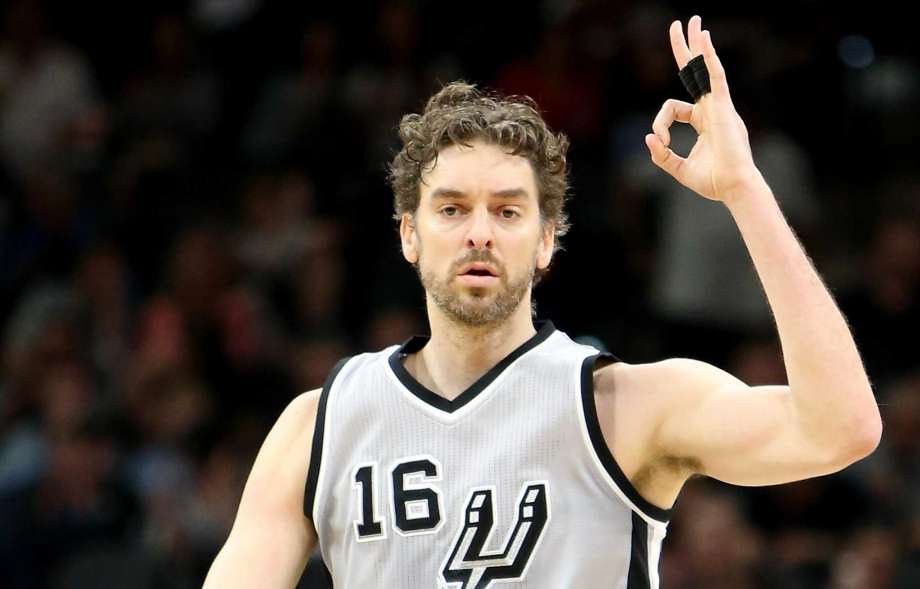
Background:
Born on July 6, 1980, in Barcelona, Spain, Pau Gasol’s journey to basketball stardom began in his hometown. He grew up in a family with a strong sporting background, fostering his passion for athletics. From an early age, his height and natural talent were evident, propelling him towards a professional career.
Net Worth:
Pau Gasol amassed a considerable fortune throughout his illustrious career. His NBA contracts, endorsements, and business ventures contributed to his estimated net worth, which is reported to be in the tens of millions of dollars. Beyond financial success, Gasol’s wealth lies in his impact on the sport and his philanthropic endeavors.
Education:
Gasol’s intelligence extends beyond the basketball court. Before fully committing to his basketball career, he pursued studies in medicine at the University of Barcelona. This academic background highlights his intellectual curiosity and dedication to learning, traits that have served him well throughout his life.
Birth & “Death”:
Pau Gasol was born on July 6, 1980. He is still alive and continues to be a public figure.
Contributions:
Pau Gasol’s contributions to basketball are vast and impactful. He achieved immense success in the NBA, notably winning two championships with the Los Angeles Lakers alongside Kobe Bryant. His presence on the court was marked by his exceptional skill, versatility, and leadership. Gasol also played a pivotal role in the success of the Spanish national team, leading them to numerous international victories, including a FIBA World Cup title and Olympic medals.
Beyond his athletic achievements, Gasol is recognized for his humanitarian work. He has been actively involved in UNICEF, advocating for children’s rights and well-being. His commitment to social causes reflects his desire to make a positive impact beyond the realm of sports. His contributions to the sport of basketball, and to the lives of people around the world, have cemented his legacy as a true icon.
Fernando Alonso (1981–Present)
Fernando Alonso is a Spanish racing driver and two-time Formula 1 World Champion, widely regarded as one of the greatest drivers in the sport’s history. His skill, adaptability, and aggressive driving style have earned him a place among the legends of motorsports.
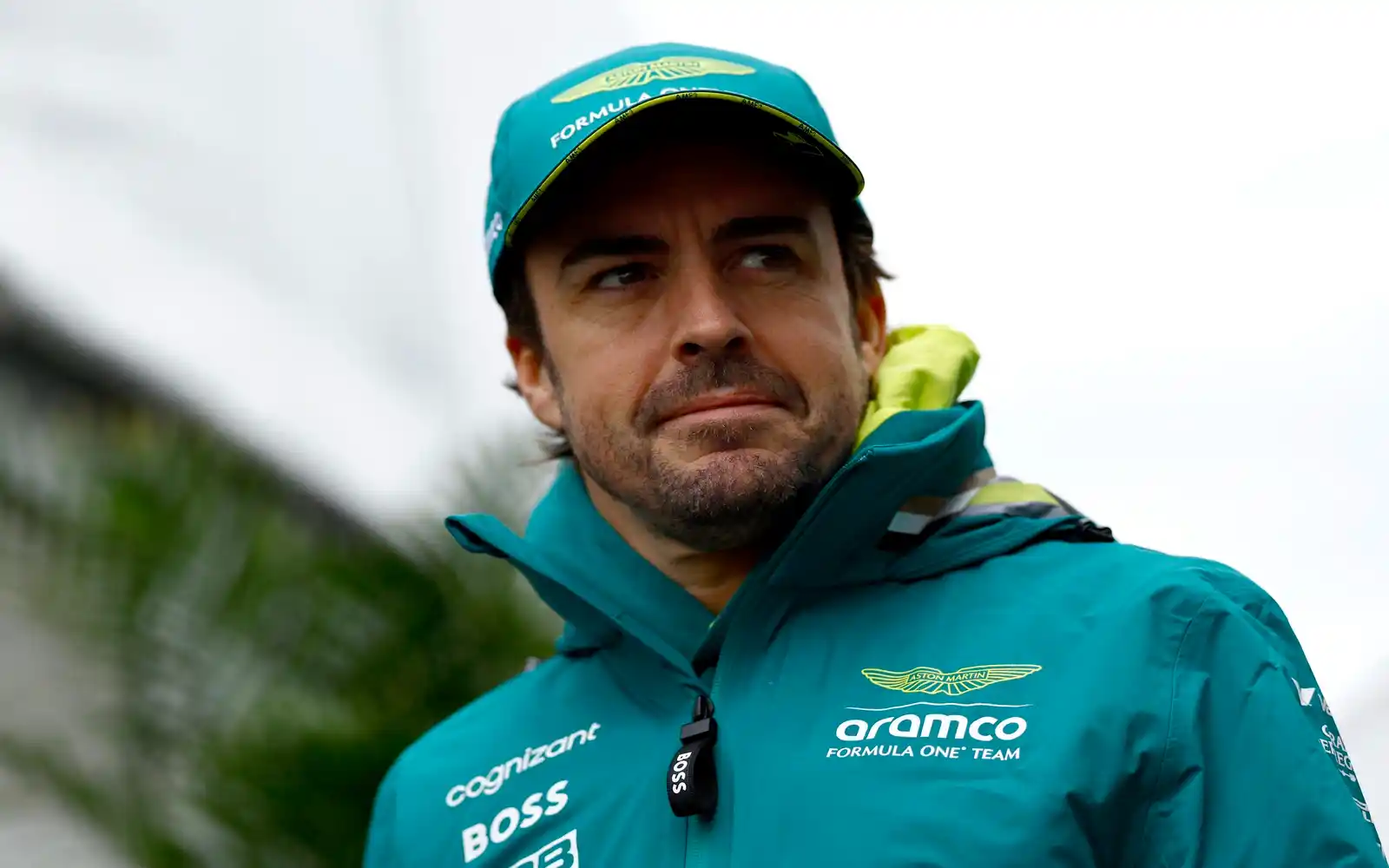
Background:
Born in Oviedo, Spain, in 1981, Alonso began karting at the age of three and quickly rose through the ranks of competitive racing. He made his Formula 1 debut in 2001 with Minardi before securing his first championship title in 2005 with Renault, becoming the youngest F1 World Champion at the time.
Net Worth:
Alonso has accumulated significant wealth throughout his career, with an estimated net worth exceeding $250 million. His earnings come from his F1 contracts, endorsements, and ventures in endurance racing, including winning the prestigious 24 Hours of Le Mans twice.
Education:
While Alonso did not pursue traditional higher education, his expertise comes from years of hands-on experience in motorsports. His deep technical understanding of racing dynamics and car mechanics has made him a formidable competitor and respected figure in the industry.
Birth & Present Life:
Fernando Alonso was born on July 29, 1981, in Oviedo, Spain. He remains an active racing driver, currently competing in Formula 1 with Aston Martin and continuing to make history as one of the sport’s most experienced and successful drivers.
Contributions:
Alonso revolutionized Formula 1 with his aggressive yet calculated driving style. His back-to-back championships with Renault in 2005 and 2006 ended Michael Schumacher’s dominance, ushering in a new era of competition. Beyond F1, his achievements in endurance racing and his commitment to developing young racing talent have further cemented his legacy in motorsports.
Alonso’s relentless pursuit of excellence and his impact on the sport continue to inspire future generations of drivers, making him one of Spain’s most iconic athletes.
Plácido Domingo (1941–)
Plácido Domingo is a name that resonates throughout the world of opera. A tenor of extraordinary talent and versatility, his career has spanned decades, marked by countless performances, recordings, and contributions to the musical arts. Beyond his vocal prowess, Domingo has also excelled as a conductor and administrator, solidifying his position as a true icon.
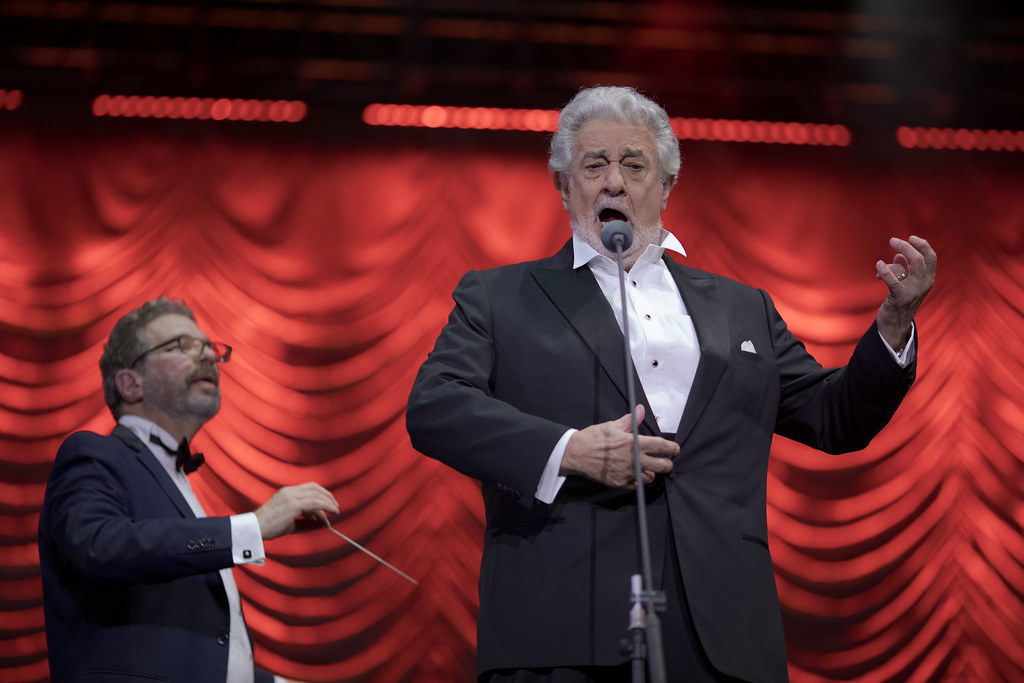
Background:
Born in Madrid, Spain, on January 21, 1941, Domingo’s musical roots run deep. His parents were both zarzuela singers, fostering his early exposure to music. The family later moved to Mexico, where his musical education flourished.
Net Worth:
Plácido Domingo has amassed a considerable net worth throughout his long and very successful career. This is due to his very long career, and numerous recordings, and performances. Information found online regarding his net worth varies.
Education:
Domingo’s formal musical training began at the National Conservatory of Music in Mexico City. This education provided the foundation for his exceptional vocal technique and musical understanding.
Birth & Death:
- Born: January 21, 1941, in Madrid, Spain.
- Plácido Domingo is still alive.
Contributions:
- Operatic Performances: Domingo has performed an astonishing number of roles, exceeding 150, and has appeared in countless opera houses worldwide. His repertoire spans a wide range of operatic works, showcasing his versatility.
- “The Three Tenors”: His participation in “The Three Tenors” concerts, alongside Luciano Pavarotti and José Carreras, brought opera to a global audience, achieving unprecedented popularity.
- Conducting: Domingo has also enjoyed a successful career as a conductor, leading orchestras in numerous prestigious venues.
- Administrative Roles: He has held significant administrative positions in opera companies, contributing to the management and development of the art form.
- Recordings: His extensive discography includes numerous opera recordings, earning him critical acclaim and awards.
- It is also important to acknowledge that in recent years, Plácido Domingo has faced allegations of sexual harassment. These allegations have impacted his career and reputation.
Plácido Domingo’s contributions to the world of music are undeniable. His talent, dedication, and passion have left an enduring legacy.
Antonio Banderas (1960–)
Antonio Banderas has captivated audiences worldwide with his magnetic presence and versatile acting skills. From his early days in Spanish cinema to his prominent roles in Hollywood blockbusters, Banderas has established himself as a true international star. His passion for his craft, combined with his undeniable charm, has solidified his place as a beloved figure in the entertainment industry.
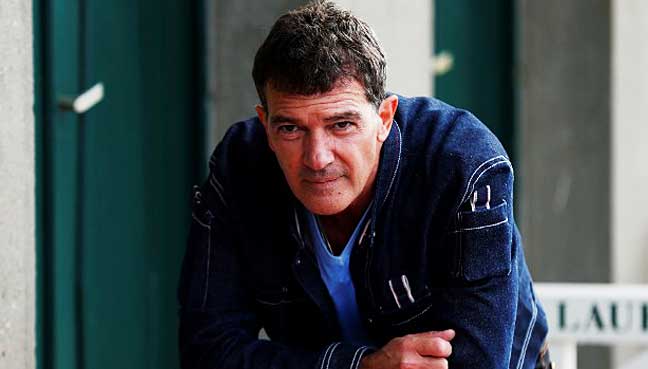
Background:
Born José Antonio Domínguez Bandera on August 10, 1960, in Málaga, Andalusia, Spain, Banderas’s early aspirations leaned towards a career in professional football. However, a foot injury at the age of 14 altered his path, leading him to discover his passion for acting. He began his theatrical journey with local theater groups, laying the foundation for his future success.
Net Worth:
Antonio Banderas has amassed a considerable net worth through his successful acting career, as well as his ventures in producing and directing. Estimates place his net worth in the tens of millions of dollars.
Education:
Banderas honed his acting skills at the School of Dramatic Art in Málaga. This formal training provided him with the necessary tools to excel in his chosen profession.
Birth & “Death”:
- Birth: August 10, 1960, in Málaga, Andalusia, Spain.
- It is important to note that Antonio Banderas is still alive.
Contributions:
Antonio Banderas’s contributions to cinema are extensive and diverse. Some of his most notable achievements include:
- His early collaborations with director Pedro Almodóvar in films like “Law of Desire” and “Women on the Verge of a Nervous Breakdown,” which brought him international recognition.
- His breakthrough into Hollywood with roles in films like “Philadelphia,” “Interview with the Vampire,” and “Desperado.”
- His iconic portrayal of Zorro in “The Mask of Zorro” and “The Legend of Zorro.”
- His voice acting role as Puss in Boots in the “Shrek” franchise and his own “Puss in Boots” spin-off films.
- His critically acclaimed role in Pedro Almodóvar’s “Pain and Glory,” which earned him an Academy Award nomination.
- His continued work in both Spanish and english language films, and his work in theater.
Banderas has not only excelled as an actor but has also ventured into directing and producing, showcasing his multifaceted talent. His dedication to his craft and his ability to connect with audiences across cultures have cemented his legacy as a true cinematic icon.
Queen Isabella I of Castile (1451–1504)
Queen Isabella I of Castile (1451-1504), known as Isabella the Catholic, was a pivotal figure in Spanish history. Her reign, alongside her husband Ferdinand II of Aragon, marked the unification of Spain, the end of the Reconquista, and the sponsorship of Christopher Columbus’s voyage to the Americas. Isabella’s legacy is complex, encompassing both achievements and controversies that continue to shape historical discourse.
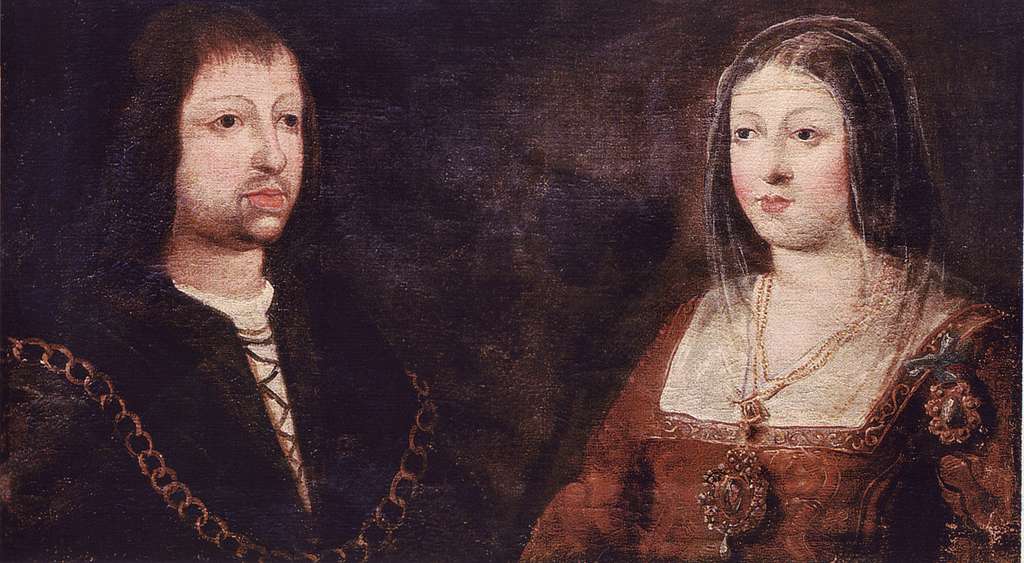
Background
Isabella was born in Madrigal de las Altas Torres, Castile. She was the daughter of John II of Castile and Isabella of Portugal. Her early life was marked by political intrigue and struggles for power within the Castilian court. She faced numerous challenges to secure her claim to the throne, eventually succeeding her half-brother Henry IV.
Net Worth
While it’s difficult to assign a modern “net worth” figure, Isabella wielded immense power and controlled vast resources. As Queen of Castile, she managed the wealth of the kingdom, including lands, taxes, and trade. Her policies significantly impacted the economic landscape of her time. Her treasury funded armies, expeditions, and court expenses.
Education
Isabella received a thorough education in politics, religion, and courtly manners. She was a devout Catholic and deeply involved in religious affairs. Her education included instruction in reading, writing, and the arts, as well as a strong grounding in the principles of governance.
Birth & Death
- Birth: April 22, 1451, in Madrigal de las Altas Torres, Castile.
- Death: November 26, 1504, in Medina del Campo, Castile.
Contributions
- Unification of Spain: Isabella’s marriage to Ferdinand II of Aragon in 1469 was a crucial step towards the unification of Spain. Though Castile and Aragon remained separate kingdoms, their joint rule laid the foundation for a unified Spanish monarchy.
- The Reconquista: Isabella and Ferdinand completed the Reconquista, the centuries-long campaign to expel the Moors from the Iberian Peninsula. The capture of Granada in 1492 marked the end of Muslim rule in Spain.
- Sponsorship of Christopher Columbus: Isabella’s decision to fund Christopher Columbus’s voyage in 1492 had profound consequences for world history. The discovery of the Americas led to the establishment of the Spanish Empire and the Columbian Exchange.
- Religious Policies: Isabella was a strong proponent of Catholicism. She played a significant role in the Spanish Inquisition, aimed at enforcing religious orthodoxy. While seen as a method to unify the country, it also caused immense suffering.
- Legal and Administrative Reforms: Isabella and Ferdinand implemented legal and administrative reforms to strengthen the monarchy and consolidate their power. They worked to centralize authority and establish a more efficient system of governance.
- Patronage of the Arts: Isabella was a patron of the arts and supported the development of Spanish culture.
Isabella I’s reign was a transformative period in Spanish history. Her actions had far-reaching effects that continue to be felt today.
Santiago Ramón y Cajal (1852–1934)
Santiago Ramón y Cajal‘s name resonates through the halls of scientific history. His meticulous observations and revolutionary theories laid the foundation for modern neuroscience. A pioneer in the study of the nervous system, his work continues to influence scientific understanding of the brain and its complexities.
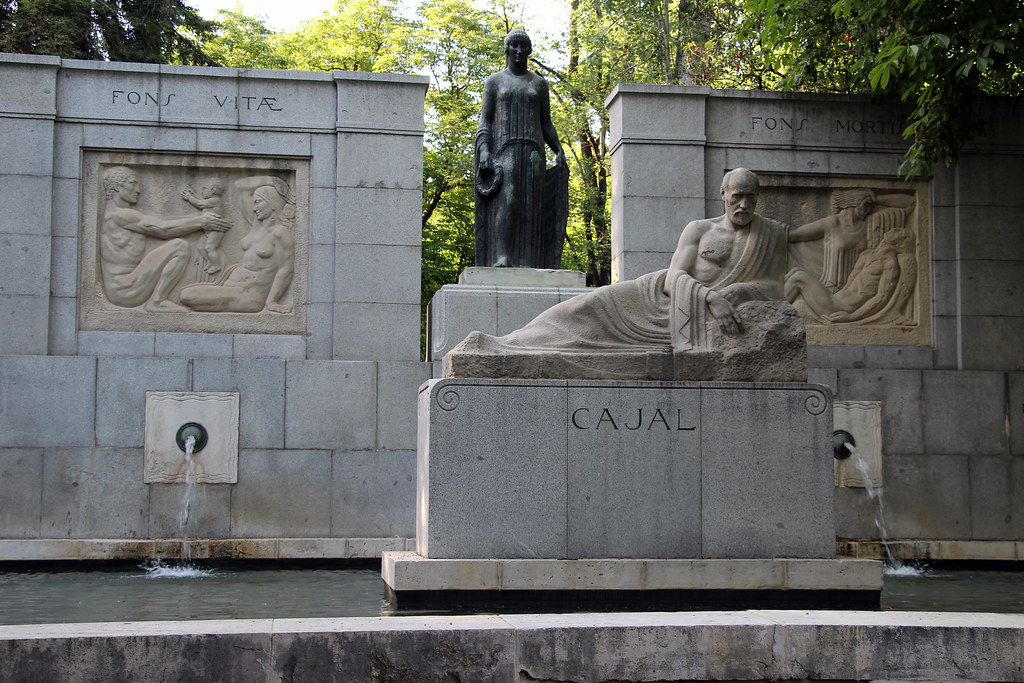
Background
Born on May 1, 1852, in Petilla de Aragón, Spain, Ramón y Cajal’s early life was marked by a strong-willed and inquisitive nature. His father, a professor of anatomy, played a significant role in fostering his interest in science. Though initially drawn to art, his path eventually led him to the study of medicine.
Net Worth
It is difficult to give a precise monetary net worth for a scientist from the time period that Santiago Ramón y Cajal lived. However, his true wealth lies within his scientific legacy. His work has enriched the world with invaluable knowledge. More importantly, he gained the highest of honors in his field, by winning the Nobel Prize.
Education
Ramón y Cajal’s educational journey included studying medicine at the University of Zaragoza. He demonstrated a keen interest in histology, the study of tissues. His skill in drawing, honed in his youth, proved invaluable in his research, allowing him to create detailed and accurate illustrations of neural structures.
Birth & Death
- Birth: May 1, 1852, in Petilla de Aragón, Spain.
- Death: October 17, 1934, in Madrid, Spain.
Contributions
Santiago Ramón y Cajal’s contributions to neuroscience are profound:
- The Neuron Doctrine: He established the neuron doctrine, the revolutionary concept that the nervous system is composed of individual cells (neurons) rather than a continuous network. This was a paradigm shift in understanding brain structure.
- Detailed Neural Illustrations: His exquisite drawings of neural tissues provided unprecedented insights into the organization of the brain and spinal cord. These illustrations remain essential tools for neuroscientists.
- Nobel Prize: In 1906, he shared the Nobel Prize in Physiology or Medicine with Camillo Golgi for his work on the structure of the nervous system.
- His work has provided the base knowledge that all modern neuroscience is built upon.
Ramón y Cajal’s legacy extends beyond his discoveries. He exemplified the power of meticulous observation, artistic skill, and unwavering dedication to scientific inquiry. His work continues to inspire generations of neuroscientists, driving advancements in our understanding of the human brain.
Enrique Iglesias (1975–)
Enrique Iglesias has carved out a monumental career, becoming a global phenomenon in the pop music scene. With his captivating blend of Latin rhythms and pop melodies, he’s consistently topped charts and filled arenas worldwide. His ability to seamlessly transition between English and Spanish-language hits has solidified his place as a true international superstar.

Background:
Born Enrique Miguel Iglesias Preysler in Madrid, Spain, on May 8, 1975, he comes from a well-known family. His father is the legendary Spanish singer Julio Iglesias, and his mother is Isabel Preysler, a Filipina socialite. Growing up, Enrique was determined to forge his own path, often keeping his musical aspirations private during his youth.
Net Worth:
Enrique Iglesias has amassed a considerable fortune throughout his career. His global record sales, sold-out tours, and various endorsements have contributed to his substantial net worth. Estimates place his net worth in the tens of millions of dollars, reflecting his long-lasting success in the music industry.
Education:
Enrique attended Gulliver Preparatory School in Miami. He later enrolled at the University of Miami to study business administration. However, his passion for music led him to drop out and pursue his dreams.
Birth & “Death”:
- Born: May 8, 1975, in Madrid, Spain.
- He is still alive, and continues to create music.
Contributions:
Enrique Iglesias’s contributions to the music industry are vast. He has:
- Released numerous multi-platinum albums and singles.
- Achieved widespread success with hits like “Bailamos,” “Hero,” “Escape,” and “Bailando.”
- Bridged the gap between Latin and mainstream pop music.
- Won multiple Grammy Awards, Latin Grammy Awards, and Billboard Music Awards.
- Has had a very long and very successful music career.
His ability to consistently reinvent himself and connect with audiences across cultures has made him one of the most successful Latin crossover artists of all time. His influence on the pop music landscape is undeniable.
Rosalía (1992–)
Rosalía Vila Tobella, known simply as Rosalía, has taken the music world by storm, seamlessly blending traditional flamenco with modern pop, hip-hop, and electronic influences. Her unique sound, coupled with her striking visual aesthetic, has garnered her international acclaim and established her as a cultural icon.

Background
Born on September 25, 1992, in Sant Esteve Sesrovires, a town near Barcelona, Catalonia, Spain, Rosalía’s passion for music ignited early. She grew up immersed in the rich musical traditions of her region, particularly flamenco. Her fascination with the art form stemmed from a young age, and she began honing her vocal skills and developing her distinctive style.
Net Worth
Rosalía’s rapid rise to fame has translated into significant financial success. While exact figures fluctuate, sources estimate her net worth to be in the multi-million dollar range. This is primarily attributed to her music sales, touring, brand partnerships, and endorsements.
Education
Rosalía’s formal musical training began at the Catalonia College of Music (ESMUC) in Barcelona. She dedicated years to studying flamenco and vocal technique under the tutelage of renowned instructors. This rigorous training provided her with the technical foundation necessary to fuse traditional sounds with contemporary genres.
Birth & Death
Rosalía was born on September 25, 1992. As of today, she is alive and actively producing music.
Contributions
Rosalía’s contributions to the music industry are multifaceted. She has:
- Modernized Flamenco: By incorporating elements of pop, trap, and electronic music, she has introduced flamenco to a new generation of listeners worldwide.
- Globalized Catalan Culture: Her use of Catalan language and references to Catalan traditions has brought her regional culture to a global stage.
- Empowered Female Artists: Rosalía’s strong stage presence and artistic control serve as an inspiration for female artists, particularly in the Latin music scene.
- Created Groundbreaking Albums: Albums like “El Mal Querer” and “MOTOMAMI” have received critical acclaim and commercial success, solidifying her status as a musical innovator.
- Collaborated with International Artists: Her collaborations with artists like Travis Scott, Bad Bunny, and The Weeknd have further broadened her reach and influence.
- Won Numerous Awards: She has been awarded many Latin Grammy awards, and a Grammy award, recognizing her artistic achievements.
Rosalía’s ability to bridge cultural gaps and push creative boundaries has made her one of the most exciting and influential artists of her generation.
Pedro Almodóvar (1949–)
Pedro Almodóvar is a name synonymous with vibrant, provocative, and deeply human cinema. A director, screenwriter, and producer, Almodóvar has crafted a unique cinematic language, exploring themes of passion, desire, and the complexities of human relationships with a distinctively Spanish flair. His films are celebrated for their bold visual style, complex female characters, and a keen eye for the eccentricities of modern life.
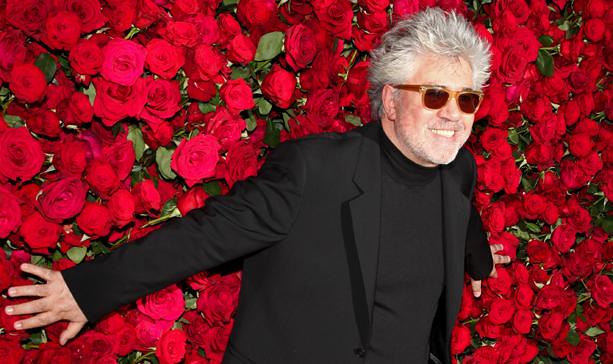
Background
Born on September 25, 1949, in Calzada de Calatrava, a small town in the La Mancha region of Spain, Almodóvar’s upbringing in a rural, post-war Spain heavily influenced his artistic vision. He moved to Madrid as a young man during the Franco regime, immersing himself in the burgeoning counterculture scene known as “La Movida Madrileña.” This period of artistic and social liberation shaped his early, more rebellious films.
Net Worth
As a highly successful and internationally acclaimed filmmaker, Pedro Almodóvar has accumulated a substantial net worth. While precise figures fluctuate, it’s widely recognized that his work as a director, producer, and through his production company, El Deseo, has contributed to his financial success.
Education
Almodóvar is largely self-taught in filmmaking. He didn’t attend formal film school, instead learning his craft by watching countless films and absorbing the vibrant cultural atmosphere of Madrid. This autodidactic approach has contributed to his distinctive and personal style.
Birth & “Death”
- Birth: September 25, 1949.
- It is important to note that as of the current date, Pedro Almodóvar is alive.
Contributions
Pedro Almodóvar’s contributions to cinema are vast and significant. Key contributions include:
- Unique Cinematic Style: He has developed a distinctive visual style characterized by vibrant colors, bold compositions, and a melodramatic sensibility.
- Exploration of Complex Themes: His films delve into complex themes of sexuality, identity, family dynamics, and the human condition, often with a focus on female characters.
- International Acclaim: He has achieved international recognition, winning numerous awards, including two Academy Awards.
- Promotion of Spanish Cinema: He has played a crucial role in promoting Spanish cinema on the global stage.
- Notable Films: Some of his most celebrated films include “Women on the Verge of a Nervous Breakdown,” “All About My Mother,” “Talk to Her,” and “Pain and Glory.”
- He has also more recently made the film “The Room Next Door” which is his first English language film.
Almodóvar’s work continues to captivate audiences worldwide, solidifying his position as one of the most influential filmmakers of his generation.
Francisco Franco (1892–1975)
Francisco Franco Bahamonde (1892-1975) remains one of the most polarizing figures in 20th-century European history. His rise to power during the Spanish Civil War and his subsequent 36-year dictatorship left an indelible mark on Spain, shaping its political and social landscape for generations. This blog post explores the life and legacy of Franco, examining his background, education, contributions, and the enduring controversy surrounding his rule.
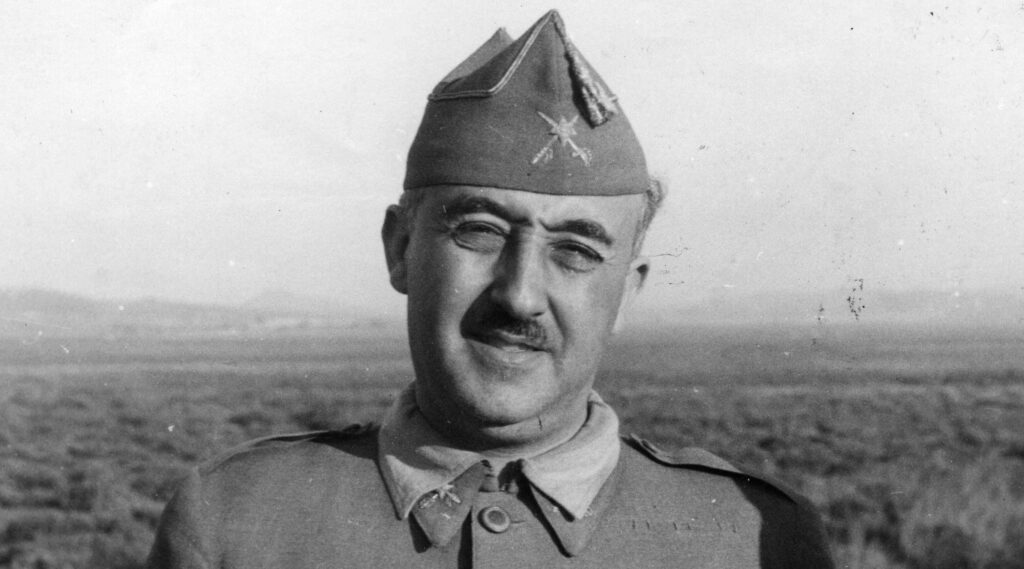
Background
Born in Ferrol, Galicia, into a family with a long military tradition, Franco’s early life was steeped in discipline and order. His father was a naval administrative officer, and this influence played a significant role in Franco’s decision to pursue a military career. The political instability of early 20th-century Spain also shaped his worldview, fostering a belief in strong, authoritarian leadership.
Net Worth
Estimating Franco’s precise net worth is challenging due to the complex nature of his regime and the lack of transparent financial records. However, it is widely acknowledged that Franco and his family amassed considerable wealth during his dictatorship. This included properties, business interests, and control over various state assets. His family has been involved in several disputes over these assets since his death.
Education
Franco’s formal education was primarily military. He attended the Infantry Academy in Toledo, graduating in 1910. He quickly rose through the ranks, demonstrating tactical skill and a reputation for strict discipline. His military training and experiences heavily influenced his political ideology and leadership style.
Birth & Death
Francisco Franco was born on December 4, 1892, in Ferrol, Spain. He died on November 20, 1975, in Madrid, Spain. His death marked the end of his long dictatorship and the beginning of Spain’s transition to democracy.
Contributions (and Controversies)
Franco’s most significant “contribution” was his leadership during the Spanish Civil War (1936-1939), which resulted in his victory and the establishment of his authoritarian regime. His rule was characterized by:
- Authoritarianism: Franco centralized power, suppressed political opposition, and imposed strict social control.
- Repression: His regime was responsible for widespread human rights abuses, including executions, imprisonment, and forced labor.
- Economic Policies: Franco’s early economic policies were characterized by autarky, leading to hardship and isolation. Later policies opened Spain to foreign investment.
- Nationalism: Franco promoted a strong sense of Spanish nationalism, emphasizing traditional values and Catholic identity.
- Political Stability (for some): While extremely repressive, his regime did bring a form of stability after the chaos of the civil war, which some point to as a positive, while others point out that this stability came at an extremely high cost.
However, his legacy is deeply controversial. His regime’s brutality, suppression of civil liberties, and long-lasting effects on Spanish society continue to be debated. His role in the Spanish Civil War and his subsequent dictatorship have left a complex and contentious legacy that Spain continues to grapple with.
Severo Ochoa (1905–1993)
Severo Ochoa was a Spanish-American biochemist whose groundbreaking research significantly advanced our understanding of molecular biology. His work on RNA synthesis earned him the Nobel Prize in Physiology or Medicine in 1959, solidifying his place as a giant in the world of science.
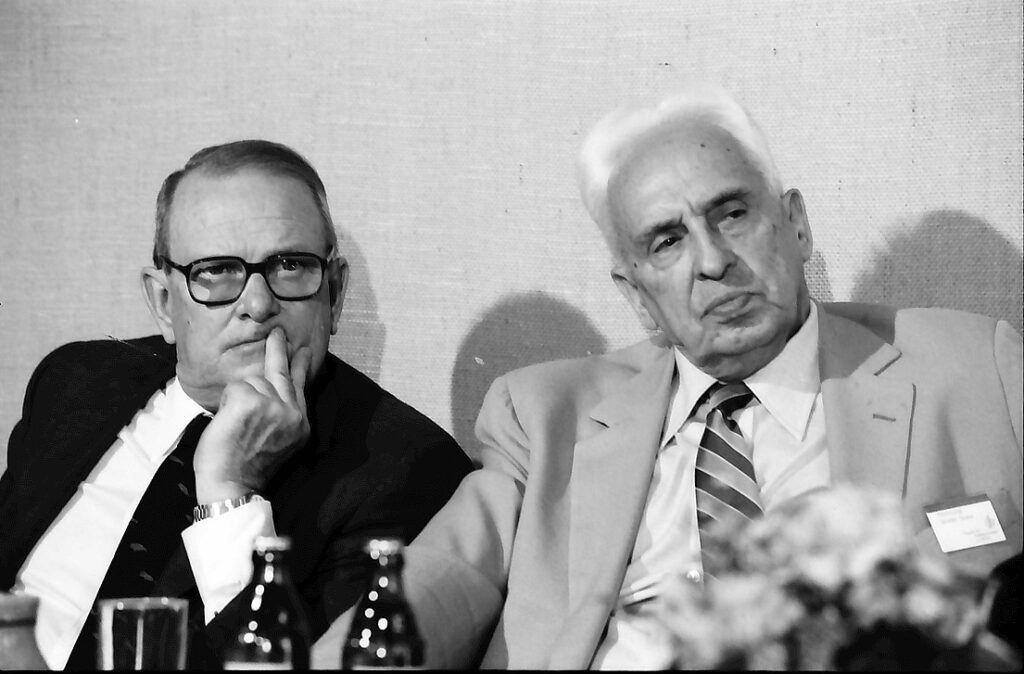
Background
Severo Ochoa was born on September 24, 1905, in Luarca, a coastal town in Asturias, Spain. His early interest in biology was nurtured by his surroundings and a natural curiosity. He displayed a strong interest in the sciences from a very young age.
Net Worth
It is difficult to give a precise figure for Severo Ochoa’s net worth. Scientists of his era were primarily focused on research, not wealth accumulation. His legacy, however, is immeasurable in terms of its contribution to scientific advancement. His true wealth lies within the massive impact his discoveries have had on modern medicine.
Education
Ochoa’s academic journey was marked by excellence. He studied medicine at the University of Madrid, where he developed a keen interest in biochemistry and physiology. He furthered his studies in Germany and England, working with prominent scientists, which shaped his research approach.
Birth & Death
- Birth: September 24, 1905, in Luarca, Asturias, Spain.
- Death: November 1, 1993, in Madrid, Spain.
Contributions
Severo Ochoa’s most significant contribution was his discovery of polynucleotide phosphorylase, an enzyme that catalyzes the synthesis of RNA. This discovery was crucial in deciphering the genetic code and understanding how genetic information is transferred.
Key contributions include:
- His work on RNA synthesis, which earned him the Nobel Prize.
- His research into the biological synthesis of RNA and DNA.
- His contributions to understanding cellular processes and molecular biology.
His work laid the groundwork for future research in genetics and molecular biology, impacting fields like medicine and biotechnology. His discoveries have been instrumental in understanding and treating various diseases.
Montserrat Caballé (1933–2018)
Montserrat Caballé (1933-2018) was a legendary Spanish operatic soprano, renowned for her exquisite vocal technique, powerful performances, and remarkable range. Her voice, often described as pure and ethereal, graced the world’s most prestigious opera houses, earning her international acclaim and solidifying her place as one of the greatest sopranos of her generation.
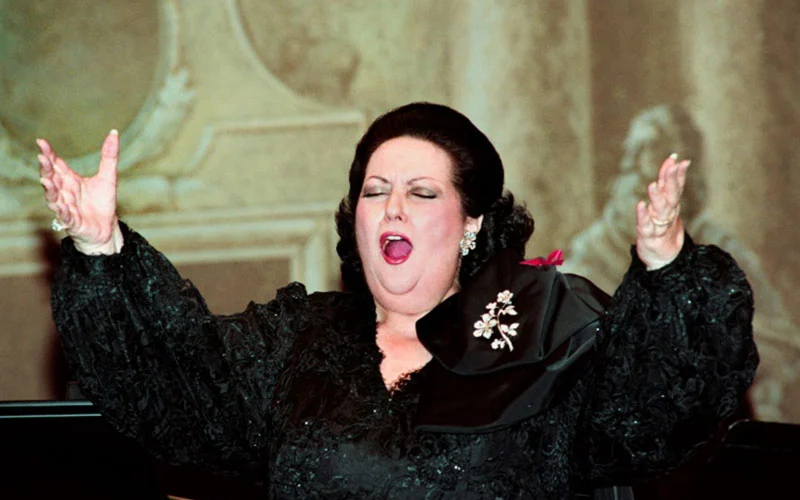
Background
Born in Barcelona, Spain, into a modest family, Montserrat Caballé’s early life was marked by the hardships of post-Civil War Spain. Despite financial constraints, her exceptional vocal talent was recognized early on, and she was encouraged to pursue her passion for singing. Barcelona, with its rich musical heritage, provided the perfect environment for her to flourish.
Net Worth
While precise figures vary, Montserrat Caballé enjoyed a successful and lucrative career, earning a substantial net worth through her performances, recordings, and appearances. Her global fame and long career led to financial stability and security.
Education
Caballé’s formal musical education began at the Conservatori Superior de Música del Liceu in Barcelona. There, she honed her vocal technique and developed her understanding of opera repertoire. Her rigorous training laid the foundation for her extraordinary career.
Birth & Death
Montserrat Caballé was born on April 12, 1933, in Barcelona, Spain. She passed away on October 6, 2018, in her beloved Barcelona, leaving behind a legacy that continues to inspire opera lovers worldwide.
Contributions
Caballé’s contributions to the world of opera are vast and profound:
- Vocal Mastery: Her impeccable technique, breath control, and ability to convey emotion through her voice set her apart. She was particularly celebrated for her interpretations of bel canto roles.
- International Acclaim: She performed in the world’s leading opera houses, including the Metropolitan Opera in New York, La Scala in Milan, and the Vienna State Opera.
- Collaborations: Her collaboration with Freddie Mercury on the song “Barcelona,” which became the official anthem of the 1992 Barcelona Olympics, introduced her voice to a wider audience.
- Extensive Repertoire: Caballé’s repertoire spanned a wide range of operatic roles, showcasing her versatility and musicality.
- Charitable Work: She was known for her philanthropic efforts, supporting various charitable causes.
- Teaching and Mentorship: In her later years, she shared her knowledge and experience with aspiring singers.
- Recordings: Her extensive discography stands as a testament to her talent, preserving her performances for future generations.
FAQs about famous personality in Spain
1. Who is the most famous Spanish person of all time?
Spain has produced many world-renowned figures, but Pablo Picasso is often considered the most famous due to his revolutionary contributions to modern art.
2. Who are the most famous Spanish artists?
Spain has been home to many iconic artists, including Pablo Picasso, Salvador Dalí, Francisco Goya, Diego Velázquez, and Joan Miró.
3. Which Spanish personalities have won the Nobel Prize?
Several Spaniards have won the Nobel Prize, including Santiago Ramón y Cajal (Physiology/Medicine), Severo Ochoa (Physiology/Medicine), Vicente Aleixandre (Literature), and Camilo José Cela (Literature).
4. Who is Spain’s most famous writer?
Miguel de Cervantes is Spain’s most famous writer, best known for his masterpiece Don Quixote, considered the first modern novel.
5. Who are the most famous Spanish actors?
Spain has produced many talented actors, including Antonio Banderas, Penélope Cruz, Javier Bardem, and Pedro Almodóvar (director).
6. Who is the most famous Spanish athlete?
Rafael Nadal is one of Spain’s most famous athletes, known for his incredible achievements in tennis, including multiple Grand Slam titles.
7. Who are the most influential Spanish women in history?
Notable Spanish women include Queen Isabella I of Castile, Montserrat Caballé (opera singer), Rosalía (musician), and Penélope Cruz (actress).
8. Which famous Spanish architect designed the Sagrada Família?
Antoni Gaudí designed the Sagrada Família, a breathtaking basilica in Barcelona, known for its unique and intricate architecture.
9. Who are the most famous Spanish musicians?
Spain has a rich musical heritage with global icons like Enrique Iglesias, Paco de Lucía, Rosalía, and Plácido Domingo.
10. Who was Francisco Franco?
Francisco Franco was a Spanish military dictator who ruled Spain from 1939 to 1975. His authoritarian regime significantly shaped Spain’s 20th-century history.
11. Who funded Christopher Columbus’s voyage to the Americas?
Queen Isabella I of Castile and King Ferdinand II of Aragon sponsored Christopher Columbus’s 1492 expedition, leading to the discovery of the New World.
12. What are some famous Spanish films directed by Pedro Almodóvar?
Pedro Almodóvar is known for films like All About My Mother, Talk to Her, Volver, and Pain and Glory.
13. What contributions did Severo Ochoa make to science?
Severo Ochoa won the Nobel Prize in Physiology or Medicine for discovering the mechanisms of RNA synthesis, a breakthrough in genetics.
14. What is Salvador Dalí famous for?
Salvador Dalí was a surrealist artist known for his eccentric personality and masterpieces like The Persistence of Memory, featuring melting clocks.
15. Which famous Spanish basketball player played in the NBA?
Pau Gasol is Spain’s most famous basketball player, winning two NBA championships with the Los Angeles Lakers.
Shamatic
This blog is written, edited, and published by Shamatic.com. We provide analysis, write informative articles, and publish guides in a variety of niches, including but not limited to finance, digital marketing, travel, web development, home improvement, career guidance, lifestyle, personalities, deals and offers, lifestyle, real estate, and others.
© Shamatic. All Rights Reserved.



